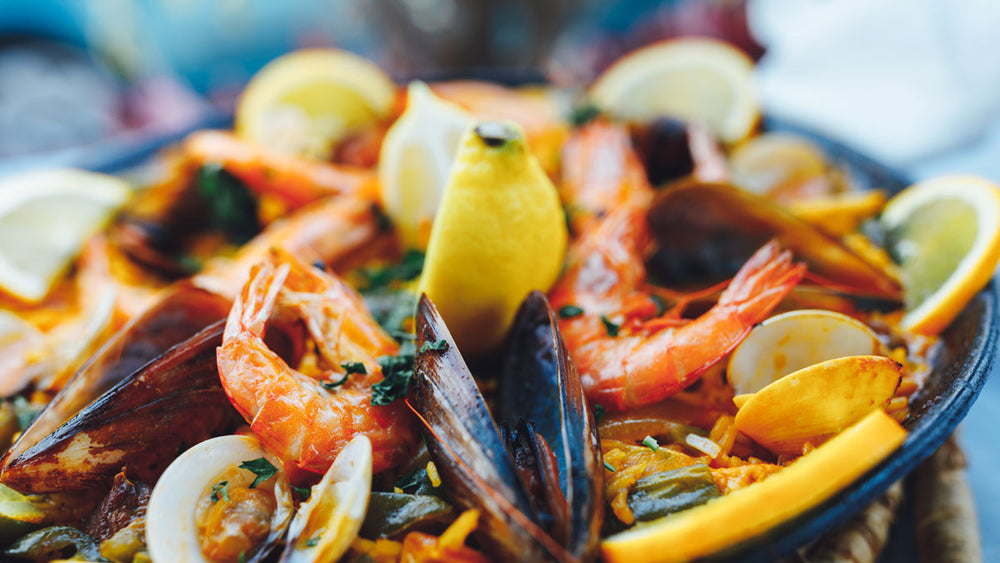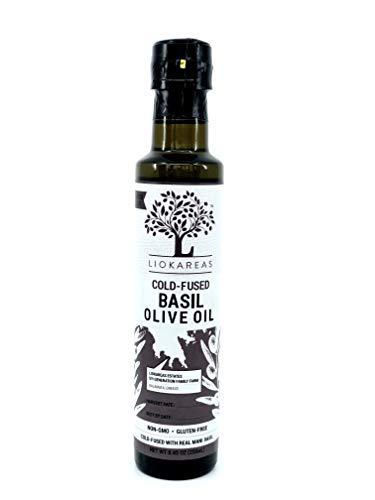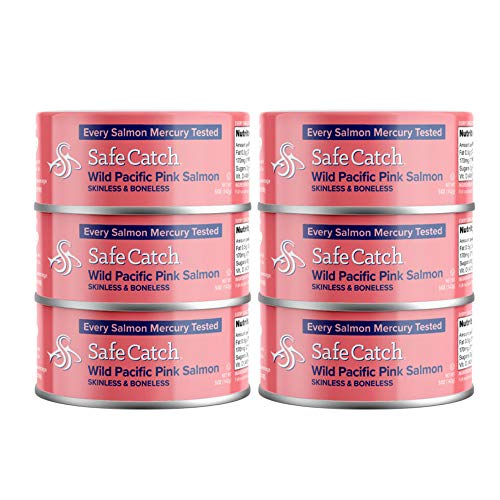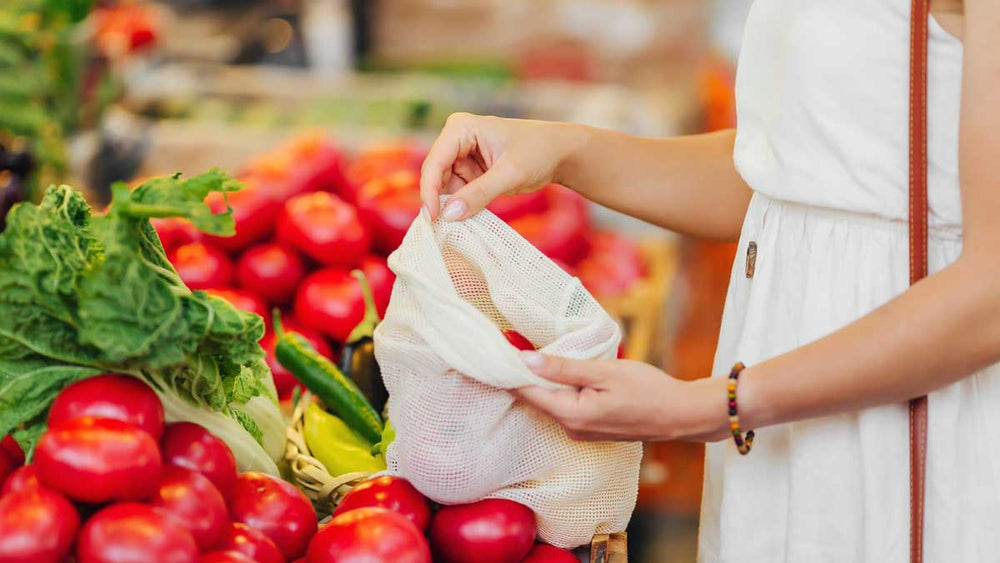How I love les poissons!
Fish and seafood can be nutrition powerhouses. Even clients following the Low FODMAP diet do NOT need to restrict fish and seafood, which are naturally Low FODMAP, according to Monash University.
But selecting fish and seafood takes a little know-how to balance the risks and benefits. Their many nutritional benefits will depend on the fish but can include:
- EPA and DHA omega-3 fatty acids
- Protein
- Minerals: Zinc, iron, magnesium, calcium, selenium, copper, iodine,
- Vitamins: vitamin D, choline, vitamin B12
- Antioxidants
But there are significant and serious seafood risks, such as:
- Pathogenic microbes in the raw fish and shellfish, such as Vibrio vulnificus, Hepatitis A virus, Norovirus, and others, can cause illness.
- Heavy metal contaminants, such as mercury, can be especially harmful during pregnancy and early childhood.
- Toxic contaminants such as algal toxins or the top five listed by the EPA: dioxins, PCBs, chlordane, and DDT, can cause negative effects or illness.
- Environmental and ecosystem threats from overfishing and unsustainable practices.
So, how do you manage the risks to get the benefits?
Here are 8 tips to have your fish and eat it too:
- Eat cooked fish and seafood -- not raw. Sorry to the raw sushi, oyster, and poke bowl enthusiasts: raw fish and seafood carry the greatest risk for illness. Cook fish to an internal temperature of 145°F according to FoodSafety.gov, and if you do not have a thermometer, they recommend checking by looking for:
- Fish that is opaque and easily separated with a fork
- Lobster, crab, scallop, or shrimp that are firm
- Clams, mussels, and oysters that have opened (discard unopened ones!)
- Don’t eat stinky fish. Whether cooked or raw, fish or seafood should NOT have ammonia, sour, rancid, or fishy odors, which can mean the fish is spoiled. Make sure to store your fish at the right temperature (frozen or in the fridge), thaw your frozen fish correctly, and cook fresh fish and seafood promptly because it will last less than two days in the refrigerator. Check out FoodSafety.gov for great tips on selecting and preparing different types of fish and seafood.
- Minimize mercury by choosing wisely. This convenient FDA-created 2021 handout, “Advice About Eating Fish,” helps vulnerable groups like children and women who are pregnant or breastfeeding eat fish with over 30 “best choice” low-mercury options. For those who are not pregnant, young children, or breastfeeding, choosing low-mercury fish most often is best.
- Make omega-3-rich, low-mercury choices your staples. Omega-3 fatty acids from oily fish play a role in decreasing inflammation and promoting skin, heart, and brain health. Fish that the NIH recommends for higher omega-3s with lower mercury are salmon, sardines, anchovies, pacific oysters, and trout. The EWG’s Seafood Calculator provides fish suggestions by both omega-3 and mercury content.
- Manage the risks, but don’t fear fish: eat fish and seafood twice weekly or more. Healthy eating patterns, which include fish twice weekly or more, can promote health and decrease the risk of chronic diseases. The NIH recommends at least 8 oz fish per week for adults and 8-12 oz, specifically low-mercury fish, weekly for pregnant women.
- Consider tinned fish with edible bones for calcium and convenience. Large fish with harder bones can pose a health threat for choking, but tinned fish with edible skin and bones can be a great source of calcium to those willing and able to chew. Tinned sardines, anchovies, and salmon can be great additions to salads, flatbreads, or toasts.
- Be cautious with your catch. Check with your state’s environmental health department before you go fishing if you want to eat what you catch, and look for advisories on fish and shellfish in your area. You can use local seafood and toxin monitoring to help you decide.
- Look for local and sustainable. Fish lovers like me want to eat fish for the foreseeable future, and that means paying attention to seafood sustainability in fish decisions whenever possible. Look at the Monterey Bay Aquarium Seafood Watch’s convenient guides for selecting ocean-friendly seafood in different regions of the U.S.
Ready to dive into a FODMAP-friendly fish dinner?
Here are 7 Low FODMAP fish and seafood recipe ideas:
- Salmon burgers. Try Chef Dédé Wilson’s Low FODMAP salmon burgers--and although she uses fresh, burgers are a great use for tinned salmon!
- Fish tacos! You can use rainbow trout, salmon, or your favorite high omega-3 low mercury fish in dietitian Kate Scarlata’s flexible Low FODMAP fish taco recipe.
- Mussels with Mediterranean flavors. Check out Chef Dede Wilson’s Low FODMAP recipe for Mussels with Tomatoes & White Wine with Garlic Toasts, or make mussels in FODY Foods Marinara over gluten-free brown rice linguine.
- Rainbow trout baked or en papillote (in parchment). Give dietitian Kate Wilson’s Baked Rainbow Trout Low FODMAP recipe a try! Serious Eats’ tips for en papillote fish preparation will make you feel like singing.
- Cioppino with mussels. Look at Chef Dédé Wilson’s Low FODMAP version of the San Francisco fisherman’s stew.
- Simple sardine toast. Try this cheap and easy recipe for Lemon and Thyme Sardine toast by Hannah Noonan with gluten-free bread.
- Seafood pasta. Get inspired with this Low FODMAP Spaghetti Puttanesca by Helen Mansey of Gut Fix Kitchen featuring anchovies with FODY Foods Marinara and extra seafood of your choice.
So…Tout à l'heure, mon poisson! Au revoir!
- Monash University. (n.d.). High and Low Fodmap Foods. Monash FODMAP. https://www.monashfodmap.com/about-fodmap-and-ibs/high-and-low-fodmap-foods/
- Centers for Disease Control and Prevention. (2020, February 28). Vibrio and oysters. Centers for Disease Control and Prevention. https://www.cdc.gov/vibrio/vibrio-oysters.html
- Fusco, G., Anastasio, A., Kingsley, D. H., Amoroso, M. G., Pepe, T., Fratamico, P. M., Cioffi, B., Rossi, R., La Rosa, G., & Boccia, F. (2019). Detection of Hepatitis A Virus and Other Enteric Viruses in Shellfish Collected in the Gulf of Naples, Italy. International journal of environmental research and public health, 16(14), 2588. https://doi.org/10.3390/ijerph16142588
- U.S. Department of Health and Human Services. (2022, February 9). Mercury. National Institute of Environmental Health Sciences. https://www.niehs.nih.gov/health/topics/agents/mercury/index.cfm
- Centers for Disease Control and Prevention. (2022, August 29). Illness and symptoms: Marine (saltwater) algal blooms. Centers for Disease Control and Prevention. https://www.cdc.gov/habs/illness-symptoms-marine.html
- US Environmental Protection Agency. (2023, June 15). Choose Fish and Shellfish Wisely: Fish and Shellfish Advisories and Safe Eating Guidelines. Environmental Protection Agency. https://www.epa.gov/choose-fish-and-shellfish-wisely/fish-and-shellfish-advisories-and-safe-eating-guidelines
- U.S. Department of Health & Human Services. (n.d.). Safe selection and handling of fish and shellfish. FoodSafety.gov. https://www.foodsafety.gov/blog/safe-selection-and-handling-fish-and-shellfish
- U.S. Food and Drug Administration. (2021, October). Advice about eating fish. U.S. Food and Drug Administration. https://www.fda.gov/food/consumers/advice-about-eating-fish
- U.S. Department of Health and Human Services. (2023, February 15). Office of dietary supplements - omega-3 fatty acids. NIH Office of Dietary Supplements. https://ods.od.nih.gov/factsheets/Omega3FattyAcids-HealthProfessional/
- Environmental Working Group. (2014, September 18). EWG’s consumer guide to Seafood. EWG. https://www.ewg.org/consumer-guides/ewgs-consumer-guide-seafood
- Monterey Bay Aquarium Seafood Watch. (n.d.). Consumer Guides. Seafoodwatch.org. https://www.seafoodwatch.org/recommendations/download-consumer-guides
- Wilson, D. (2020, September 19). Easy low Fodmap Salmon Burgers. FODMAP Everyday. https://www.fodmapeveryday.com/recipes/easy-low-fodmap-salmon-burgers/
- Scarlata, K. (2015, March 26). Flavorful low fodmap fish tacos. For A Digestive Peace of Mind-Kate Scarlata RDN. https://blog.katescarlata.com/2015/03/26/flavorful-low-fodmap-fish-tacos/
- Wilson, D. (2019, December 29). Low Fodmap Mussels with tomatoes & white wine with garlic toasts. FODMAP Everyday. https://www.fodmapeveryday.com/recipes/mussels-with-tomatoes-white-wine-with-garlic-toasts/#wprm-recipe-container-9536
- Wilson, K. (2018, March 30). Baked rainbow trout. Katelyn Wilson, RD. https://www.healthygutfx.com/recipe/baked-rainbow-trout/
- Mitarai, K. (2018, August 10). How to cook en papillote. Serious Eats. https://www.seriouseats.com/how-to-cook-food-en-papillote-packages-vegetables-meat-fish-slideshow
- Wilson, D. (2019, December 26). Low Fodmap Cioppino. FODMAP Everyday. https://www.fodmapeveryday.com/recipes/low-fodmap-cioppino/
- Noonan, H. (2022, April). Lemon & Thyme Sardines on Toast. IrritableBowelSyndrome.net. https://irritablebowelsyndrome.net/recipes/lemon-thyme-sardines-toast
- Mansey, H. (2022, August 29). Low Fodmap Spaghetti Puttanesca. Gut Fix Kitchen. https://gutfixkitchen.com/low-fodmap-spaghetti-puttanesca/#recipe





















Comments
Ed Hogan
10/01/2025 at 01:28 PM
Is cooked shrimp eaten in small bites ok to eat with ibs
Join The Conversation...